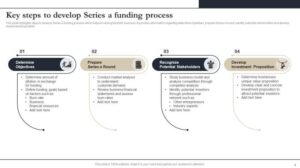
IT security risk evaluation is a critical process that helps organizations safeguard their information assets against potential threats. In today’s digital landscape, where cyberattacks are increasingly sophisticated, understanding how to evaluate and manage these risks is paramount for businesses of all sizes. This evaluation not only identifies vulnerabilities but also empowers organizations to implement effective strategies to protect their sensitive data.
By systematically assessing risks, companies can foster a culture of security awareness, enhance their incident response capabilities, and ensure compliance with regulatory standards. Through innovative methodologies and best practices, organizations can stay ahead of emerging threats while simultaneously supporting their overall business objectives.
Understanding IT Security Risk Evaluation
IT security risk evaluation is a critical process that organizations must undertake to safeguard their information systems and data. It involves identifying potential risks, assessing their impact, and determining the necessary steps to mitigate them. This evaluation not only protects sensitive information but also ensures compliance with various regulations, thereby enhancing the organization’s reputation and trustworthiness.The steps involved in conducting an IT security risk evaluation typically include:
- Identifying assets that need protection.
- Determining potential threats and vulnerabilities.
- Assessing the likelihood and potential impact of identified risks.
- Prioritizing risks based on their severity.
- Developing and implementing risk mitigation strategies.
Common methodologies used in evaluating IT security risks include the OCTAVE (Operationally Critical Threat, Asset, and Vulnerability Evaluation), FAIR (Factor Analysis of Information Risk), and NIST (National Institute of Standards and Technology) frameworks, which provide structured approaches to identifying and managing risks.
Components of IT Security Risk Management
An effective IT security risk management framework comprises several key components that work together to ensure robust protection against threats. These components include the identification of risks, assessment of vulnerabilities, implementation of controls, and continuous monitoring.Threat assessment and vulnerability analysis play a significant role in risk management. Threat assessment involves identifying potential threats that could exploit vulnerabilities within the system, while vulnerability analysis focuses on identifying weaknesses in the system that could be targeted.There is a close relationship between risk assessment and incident response planning.
A thorough risk assessment informs incident response strategies, ensuring that organizations are prepared to respond effectively to security incidents, thereby minimizing damage and recovery time.
Business Innovation in IT Security
Innovation plays a pivotal role in enhancing IT security risk evaluation practices. Organizations are increasingly adopting innovative solutions such as artificial intelligence and machine learning to identify potential security threats in real-time.Emerging technologies impact IT security risk management by introducing new vulnerabilities and challenges. For instance, the adoption of cloud computing requires organizations to rethink their security frameworks and implement controls to protect data stored off-site.Businesses can leverage innovation to enhance their IT security posture by implementing advanced analytics, automating security processes, and investing in cyber threat intelligence platforms.
These innovations not only improve security but also streamline operations and reduce costs.
International Business and IT Security
Global regulations significantly impact IT security risk evaluation. Compliance with regulations such as GDPR (General Data Protection Regulation) and HIPAA (Health Insurance Portability and Accountability Act) is essential for organizations operating internationally.International businesses face several challenges in managing IT security risks, including varying regulations across countries, cultural differences in security practices, and the complexity of global supply chains. These challenges necessitate a comprehensive approach to risk management that considers the unique aspects of each market.Case studies of international businesses successfully managing IT security risks demonstrate the importance of a strong security framework.
For example, a multinational corporation may implement a centralized security policy while allowing localized adaptations to address specific regional threats.
Integrating IT Security into Business Management

Integrating IT security risk evaluation into overall business management strategies is crucial for protecting organizational assets. This integration ensures that security considerations are part of the decision-making process and risk management framework.Leadership support is vital for the success of IT security initiatives, as executive buy-in helps to allocate necessary resources and fosters a culture of security awareness across the organization.Fostering a security-aware culture involves implementing training programs that educate employees about security best practices, encouraging open communication about security concerns, and recognizing individuals who contribute positively to the organization’s security posture.
The Role of Marketing in IT Security Awareness
Marketing IT security awareness to employees and stakeholders is essential for building a security-conscious organization. Strategies may include creating engaging content that highlights security risks, leveraging internal communication channels, and organizing training sessions.Effective communication enhances understanding of IT security risks by breaking down complex concepts into relatable information. For instance, using real-life examples of cyber threats can make security issues more tangible for employees.A marketing campaign focused on IT security best practices could include a series of workshops, email newsletters, and interactive quizzes that reinforce key security concepts and encourage employee participation in security initiatives.
Networking for IT Security Professionals
Effective networking strategies for IT security professionals can enhance career growth and knowledge sharing. Attending industry conferences and seminars allows professionals to connect with peers, share experiences, and stay updated on the latest trends.Building relationships within the industry is crucial for knowledge sharing. Engaging with fellow professionals through online forums, social media groups, and local meetups can provide insights into new challenges and solutions.When attending security conferences and workshops, professionals should be proactive in initiating conversations, asking questions, and participating in discussions.
This involvement not only fosters connections but also enhances learning and professional development.
Business Outsourcing and IT Security Risks
Outsourcing business functions can introduce potential IT security risks, such as data breaches and compliance violations. Organizations must be diligent in assessing these risks before entering into outsourcing agreements.Best practices for evaluating the security posture of third-party vendors include conducting thorough due diligence, reviewing security certifications, and implementing contractual security requirements.A checklist for assessing the IT security risks of outsourcing agreements should include evaluating the vendor’s security policies, incident response capabilities, and historical performance regarding data protection.
Workplace Communication and IT Security
Clear communication regarding IT security policies is vital for ensuring that all employees understand their responsibilities. Organizations should develop straightforward policies and provide regular updates to keep everyone informed.Effective communication during a security incident is critical to managing the situation. Establishing clear protocols for notifying employees and stakeholders can help ensure a coordinated response and minimize confusion.Training employees on secure communication practices involves educating them about avoiding phishing attempts, using secure channels for sensitive information, and recognizing the importance of confidentiality in communications.
Risk Management Strategies for Small Businesses
Small businesses face unique challenges in IT security risk evaluation, often due to limited resources. Tailored risk evaluation methods can help these businesses identify and mitigate risks effectively.Cost-effective measures that small businesses can take to mitigate IT security risks include implementing strong password policies, using antivirus software, and conducting regular security audits.Examples of tools and resources available for small business IT security management include cloud-based security solutions, free cybersecurity training programs, and government resources that provide guidance on best practices.
Venture Capital and IT Security

IT security risk evaluation is crucial in the venture capital funding process. Investors increasingly look for robust security strategies as part of their due diligence to protect their investments and mitigate potential risks.Startups can present their IT security strategies to potential investors by showcasing their security plans, risk management frameworks, and any certifications they have obtained, demonstrating their commitment to security.Venture capitalists should evaluate various security considerations, including the startup’s ability to respond to security incidents, the robustness of its data protection measures, and its compliance with relevant regulations.
Team Building and IT Security
Team dynamics can significantly affect IT security risk evaluation. Effective collaboration among team members enhances the ability to identify and address security risks in a holistic manner.Building cross-functional teams focused on IT security initiatives encourages diversity of thought and expertise. This approach allows organizations to tackle security challenges from multiple perspectives, leading to more comprehensive solutions.Exercises that promote teamwork in addressing IT security challenges may include scenario-based training, collaborative workshops, and group discussions that foster open communication and creative problem-solving.
Conclusive Thoughts
In conclusion, IT security risk evaluation is not just a technical necessity but a vital component of a resilient business strategy. As organizations strive to innovate and grow, integrating robust security measures will protect their assets and reputation. Embracing a proactive approach to risk evaluation equips companies to navigate the complexities of the digital world, ensuring they remain competitive and secure ultimately.
Questions and Answers
What is IT security risk evaluation?
IT security risk evaluation is the process of identifying, assessing, and prioritizing risks related to information technology, helping organizations protect their data and systems.
Why is IT security risk evaluation important?
It is essential for identifying vulnerabilities, ensuring compliance with regulations, and developing effective strategies to mitigate potential threats.
How often should IT security risk evaluations be conducted?
Organizations should conduct evaluations regularly, typically annually or bi-annually, and also after significant changes to their IT environment.
What methodologies are used for IT security risk evaluation?
Common methodologies include qualitative and quantitative risk assessments, OCTAVE, FAIR, and NIST frameworks.
Can small businesses implement IT security risk evaluations?
Yes, small businesses can and should implement risk evaluations tailored to their specific needs, often using cost-effective tools and strategies.



